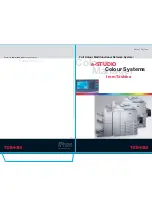
Torq User Guide
»
Chapter 1
72
Torq User Guide
»
Chapter 13
72
VST Crash Guard
A plug-in works by inserting small bits of programming code into another program (in this case, you’ll be inserting an effect
processing plug-in into Torq). This can be problematic since some VSTs are made with little to no external testing at all (and
they may not have been tested with Torq specifically). Granted, it’s usually the free VST plug-ins found on the web that lack
the testing imposed by other professional plug-ins. These dirty plug-ins can be some of the most experimental and creative
offerings out there, which is why you may still want to try them.
Obviously, it would be completely unacceptable for Torq to crash right in the middle of a gig because of a little VST plug-in.
However, the music must keep playing at all times. For that reason, Torq has been designed with VST Crash Guard, which
is a system that will allow Torq to stay running even if an error should occur in the VST plug-in, causing it to crash. If this
occurs, Torq will detect the crash and will quickly bypass the offending plug-in to keep the music going. When this happens,
you can either attempt to re-load the plug-in (in hopes that it will reset and become functional again) or you can remove
the plug-in and try another. Either way, Torq’s got your back and will keep the music flowing.
VST Preset Management
Just like you can save the built-in Effect Rack, you can also save the settings for a VST plug-in. Some plug-ins will manage
their own presets from within the GUI. In these cases, you’ll need to consult the plug-in’s user manual to learn how to use
the presets.
Other VST plug-ins will rely on the host application (Torq, in this case) to manage their presets. In this case, you’ll need to
use the Preset Management tools that appear above the plug-in’s GUI.
















































